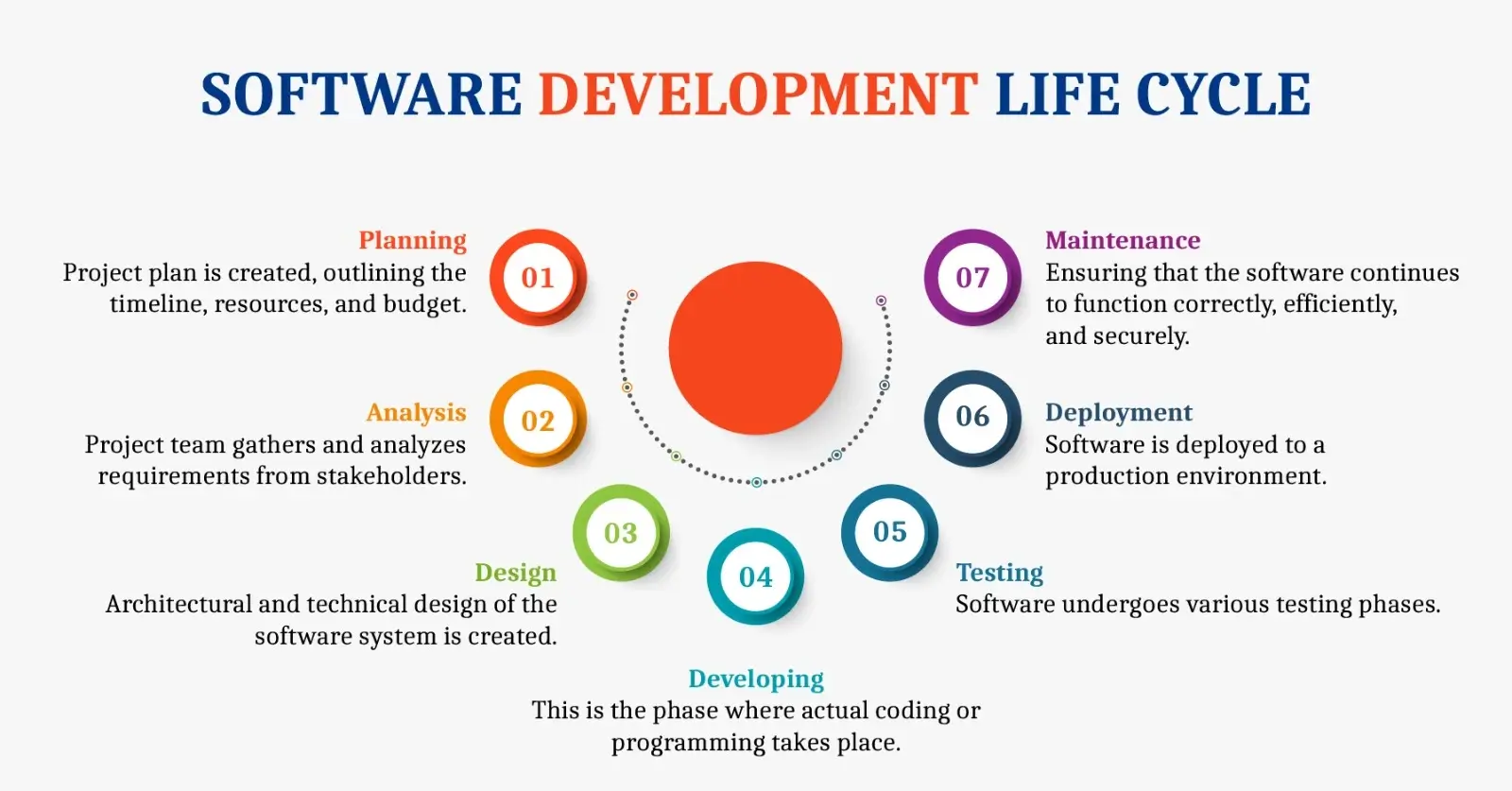

The development team of any company or project must pick a life cycle model and adhere to it. Moreover, the creation of a software product cannot be systematic without a precise life cycle model. Thus, there is an agreement among team members on when and what to do when producing a software product. If not, it means disorder and project failure. Here, the software development life cycle comes into the picture.
Following the SDLC can lower your project risks and speed up development. Learn more about SDLC, its types, processes, and models in the blog below.
SDLC stands for “Software Development Life Cycle”. This process is adopted for software development within any software organization. The SDLC consists of an extensive plan that describes how to create, maintain, upgrade, and replace software. The life cycle also outlines ways to improve both the software’s quality and the development process.
Therefore, a life cycle model shows all the tasks done on a software product from the start till the end. Further, the necessary development activities may be split into phases depending on the SDLC life cycle model. Thus, all the crucial activities are present in all life cycle models. However, carry out the actions in various orders depending on the life cycle model. You can also perform more than one activity at any stage of the life cycle.
The Software Development Lifecycle (SDLC) consists of a series of well-defined phases or stages. It is implemented during the development and management of software projects.

Phase 1: Planning and Requirement Analysis
Proper planning is an essential stage in everything. The company’s developers also carry out the requirement analysis at this level. Moreover, customer feedback and market and sales department surveys work as input for the analysis. This investigation helps build the core of a project. Thus, this stage of the software life cycle improves the project’s quality. Finally, the team designs the basic project at this stage using all the available information.
Phase 2: Defining Objectives
All the final software requirements are set out at this stage. Customers, market analysts, and other stakeholders all must agree with these requirements. Thus, SRS (Software Requirement Specification) serves to satisfy this. This type of document outlines everything that must be set up and built during the project.
Phase 3: Designing Architecture
Software architects can use SRS as a guide for creating the ideal software architecture. So, the Design Document Specification (DDS) contains various designs for the product architecture. DDS also depends on the SRS criteria. This phase of the software development life cycle is crucial as market analysts and stakeholders also use this DDS. They choose the most practical and logical design for development after considering all possible aspects.
Phase 4: Developing a Product
The product’s main development begins at this stage. Developers use a particular programming language that fits with the DDS design. Therefore, the coders must follow the guidelines set up by the association. Additionally, they use traditional tools like compilers, interpreters, and debuggers. The use of languages, like C/C++, Python, or Java is mandatory by software regulations.
Phase 5: Integrating and Testing Products
Software testing in an SDLC process after product development to check functionality. However, a little testing is also there at each stage of the SDLC. Thus, all potential issues get identified, rectified, and retested. This verifies that the product meets the SRS quality standards.
Phase 6: Deployment (or Implementation)
Once the software has passed all testing phases, it’s deployed to a production environment. This may involve setting up servers, databases, and other infrastructure required for the software to run.
Phase 7: Product Deployment and Maintenance
The final product releases as per the organization’s strategy and thorough testing. It then goes through a genuine industrial setting. This is because it is necessary to ensure the product’s efficiency. After receiving helpful feedback, the corporation publishes the product as it is. However, it can also release the product with supplemental enhancements to make it more useful.
There are several types of SDLC models, and each has its approach to the software development process. Here are some of the most commonly used SDLC models:
Software development life cycle refers to design, development, and testing procedures in the market. There isn’t a single best or outstanding SDLC method. But, it is important to be familiar with the most popular models. You can use any of these models on projects because every company has a different software testing or SDLC process. In this blog, you can go through various SDLC stages and models.
Ans. Agile SDLC methodology focuses on flexibility and iteration in Software development.
Ans. The SDLC integrates the Scrum framework as part of its agile methodology.
About The Author:
The IoT Academy as a reputed ed-tech training institute is imparting online / Offline training in emerging technologies such as Data Science, Machine Learning, IoT, Deep Learning, and more. We believe in making revolutionary attempt in changing the course of making online education accessible and dynamic.

Digital Marketing Course
₹ 9,999/-Included 18% GST
Buy Course₹ 29,999/-Included 18% GST
Buy Course